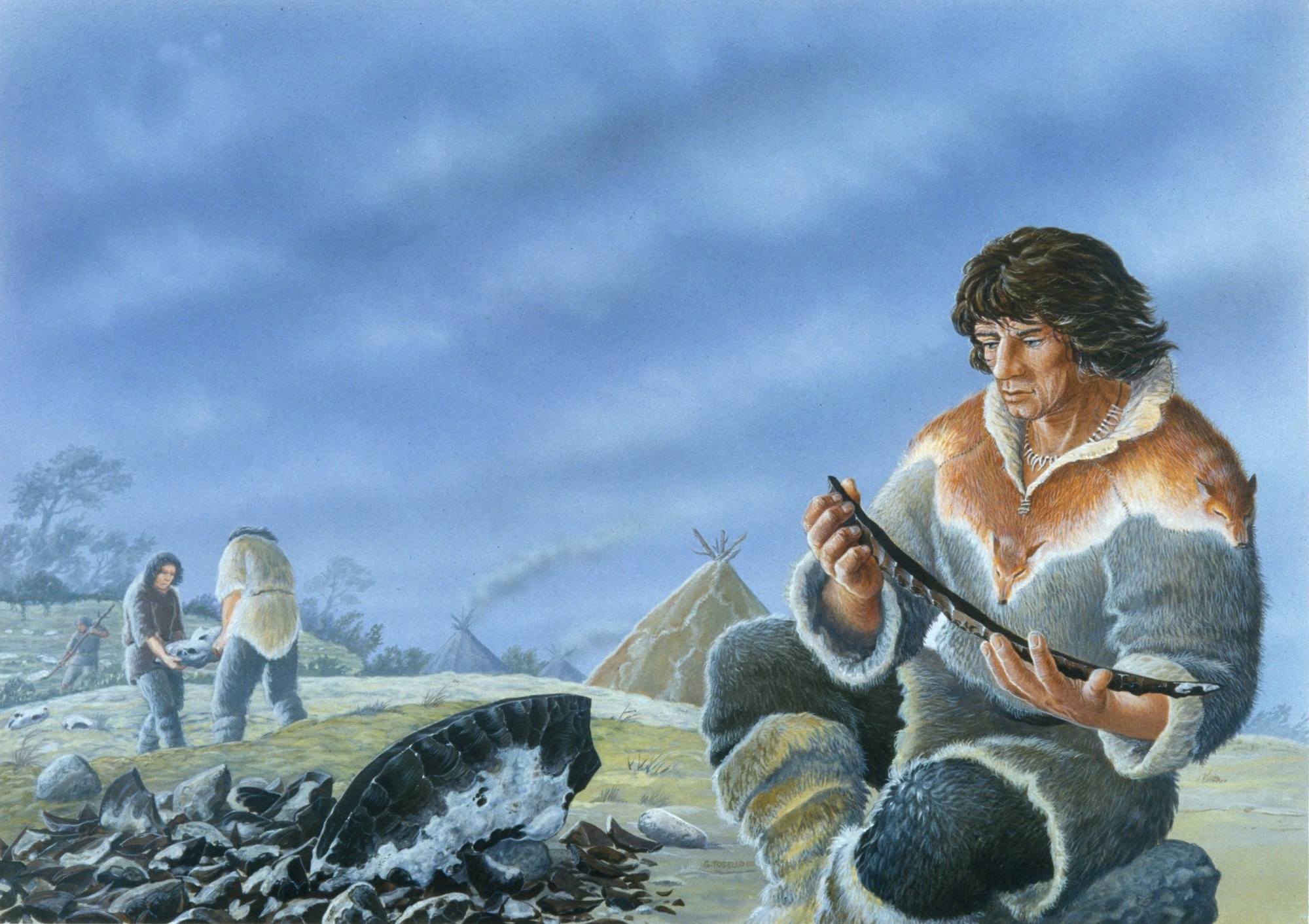
- Home
- Explore the site
- Technology and symbols
- Adornment, art and curiosities
Compared to other Magdalenian sites, in particular those in south-west France, Switzerland and central Germany, at Étiolles, as elsewhere in its region, aesthetic creations are rare. This is for both historical and cultural reasons, and probably linked to the importance of more practical activities in this type of camp. There are nonetheless some remains that are highly emblematic of the Magdalenians’ symbolic universe.
Adornments that came from far away
This is the case for shells, accidentally detached from jewellery or clothing. Often made from teeth, those at Étiolles are typical of Magdalenian tastes and generally came from fossiliferous zones approximately 50 kilometres from Étiolles. There are also fragments of mussel valves and a mollusc, which could only have been found on coasts. They are therefore an indication of long-distance exchange, certainly with the Atlantic, and perhaps with the Mediterranean as well.
A fragment of Magdalenian mythology
The style and subject of the engravings on the pebble from habitation D71 provide further clear evidence of close links with the south. This piece is also original as it contains several characters, including one very strange one, in what resembles an unfortunately indecipherable narrative.
Even more ambiguous stories
While the pebble at D71 had been discreetly abandoned, a large piece of limestone was left, clearly visible, at the entrance to habitation Q31. Dating from the occupants’ arrival, researchers have not identified any utilitarian function for it and are curious about its harmonious form. Is it simply a curiosity or did it have some significance in Magdalenian symbolism?
Also at Q31, we are curious about a large fragment of flint that has been intentionally retouched, not as a tool, as was traditional, but in the form of an animal, far from the artistic canon of the Late Magdalenian. Should we simply interpret this as play?



